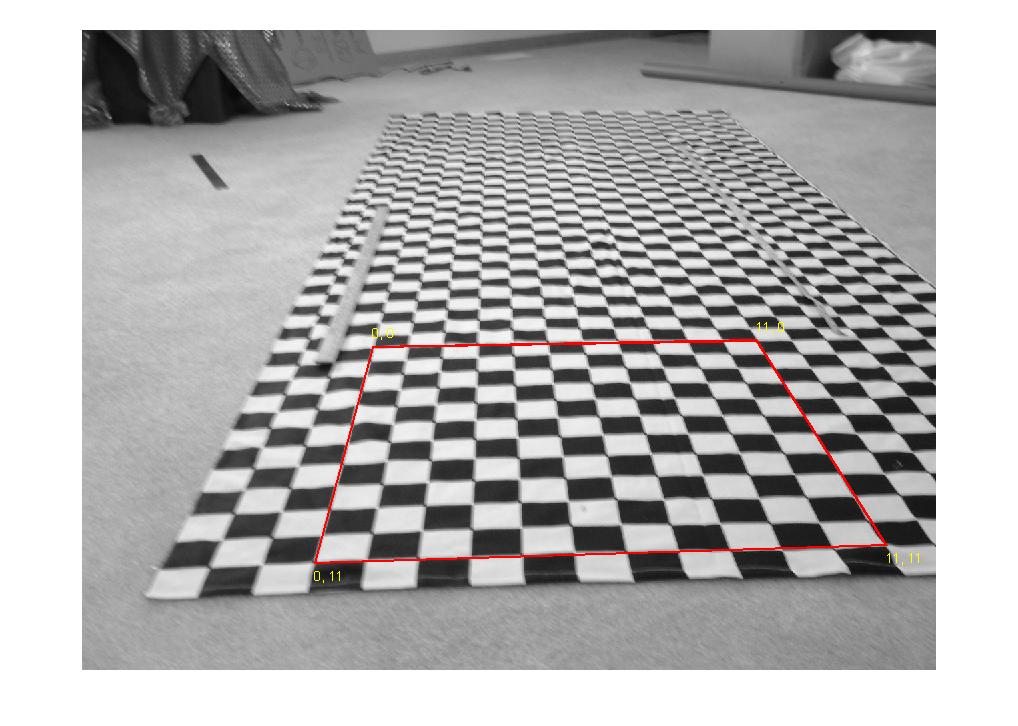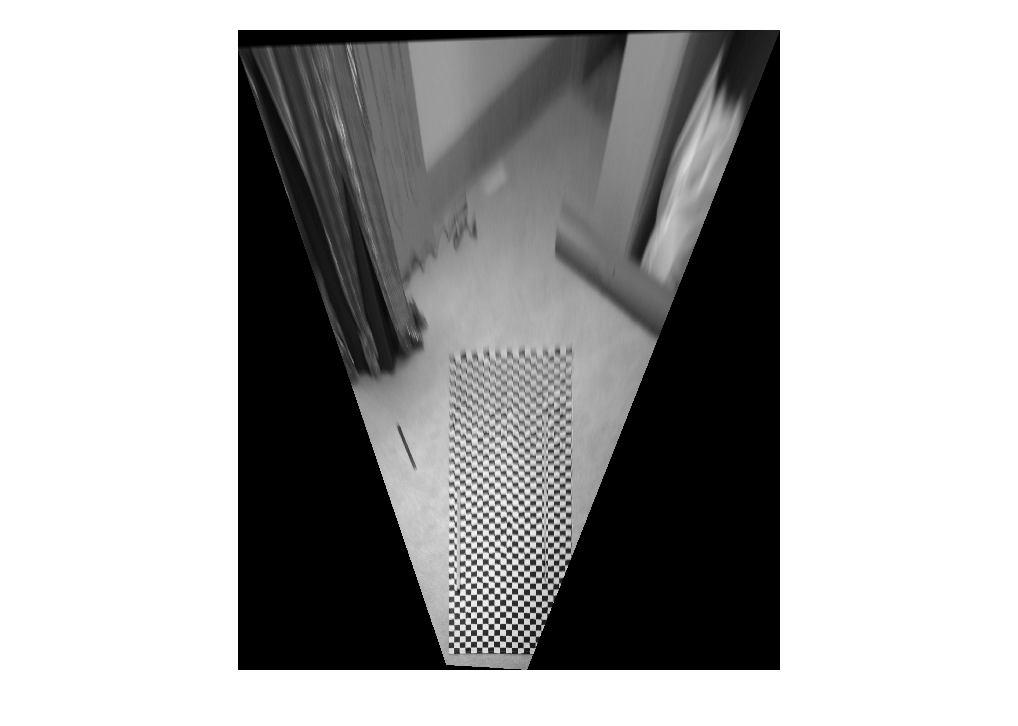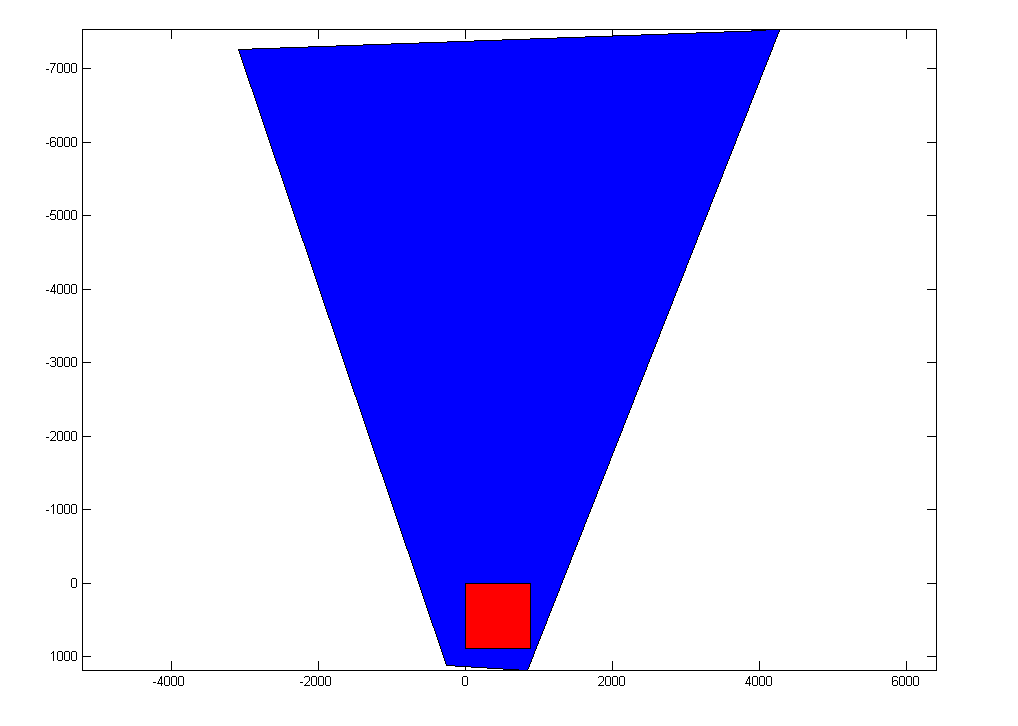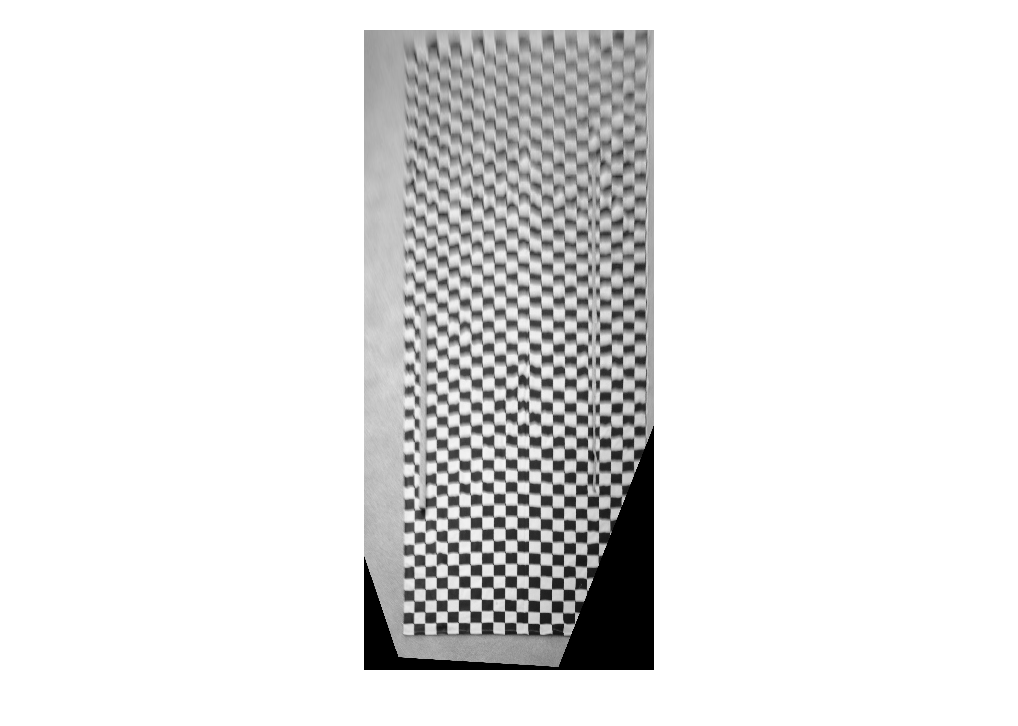Ortho
Produce orthonormal view from oblique projective image
read original image
clear; close all filename = '2002_1229_125739AA.JPG'; img = im2double(rgb2gray(imread(filename))); name = 'check2'; msgid = 'Images:initSize:adjustingMag'; warning('off',msgid); imshow(img);

input corners (using impixel) and compute transform
%[c r p] = impixel; c = [ 349 1207 1012 436 ]'; r = [ 800 773 466 476 ]'; base = [0 11; 11 11; 11 0; 0 0]; tf = cp2tform([c r],base*80,'projective'); disp('tf = '); disp(tf) disp('tf.tdata = '); disp(tf.tdata); T = tf.tdata.T; disp('T ='); format short g disp(T); format
tf =
ndims_in: 2
ndims_out: 2
forward_fcn: @fwd_projective
inverse_fcn: @inv_projective
tdata: [1x1 struct]
tf.tdata =
T: [3x3 double]
Tinv: [3x3 double]
T =
1.4961 0.071194 -1.7051e-05
0.40173 4.1008 0.0015472
-843.53 -1983 0.27095
overlay control points on image
imshow(img); hold on; plot([c;c(1)],[r;r(1)],'r','Linewidth',2); text(c(1),r(1)+20,'0, 11','Color','y'); text(c(2),r(2)+20,'11, 11','Color','y'); text(c(3),r(3)-20,'11, 0','Color','y'); text(c(4),r(4)-20,'0, 0','Color','y'); hold off; F = getframe(); g = frame2im(F); imwrite(g,[name '_overlay.jpg']);

do image transform
[xf1, XData, YData] = imtransform(img,tf);
imshow(xf1)
imwrite(xf1,[name '_registered.jpg']);
Warning: IMTRANSFORM has increased the scale of your
output pixels in X-Y space to keep the dimensions of
the output image from getting too large. This
automatic scale change will be removed in a future
release.
To ensure that output pixel scale matches input
pixel scale specify the 'XYScale' parameter. For
example, call IMTRANSFORM like this:
B = IMTRANSFORM(A,T,'XYScale',1)

show a simplified form of the original image
bdi = [1 1; 1280 1; 1280 960; 1 960]; fill(bdi(:,1),bdi(:,2),'b'); axis ij; hold on fill(c,r,'r'); hold off axis equal

% show the transformed simplified image rd = tformfwd(tf,[c r]); bds = tformfwd(tf,bdi); fill(bds(:,1),bds(:,2),'b') axis ij hold on fill(rd(:,1),rd(:,2),'r') axis equal hold off

% show that the control points map to the target points prd = [c r ones(4,1)]*T; % B = repmat(A,M,N) creates a large matrix B consisting of an M-by-N % tiling of copies of A. % This is used to produce two copies of the the third, homogeneous % variable. The end result is to convert homogeneous to normal variables. uv = prd(:,1:2)./repmat(prd(:,3),1,2); disp('uv/80 = '); disp(uv/80)
uv/80 = -0.0000 11.0000 11.0000 11.0000 11.0000 0 -0.0000 -0.0000
truncate the resulting transformation. We used the previous plot to select the XData and YData limits.
xf2 = imtransform(img,tf,'XData', [ -500 1500],'YData',[-3200 1200]); imshow(xf2) imwrite(xf2,[name '_truncated.jpg']); warning('on',msgid);
